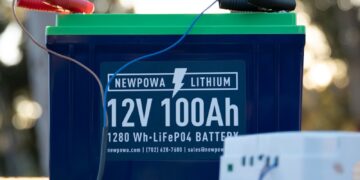For decades, the concept of “off the grid” was associated with remote cabins, survivalists, and back-to-the-land idealists. But today, thanks to the convergence of federal incentives, advanced battery storage, and behind-the-meter (BTM) solar solutions, “going off-grid” has become not just viable, but strategically advantageous for commercial and industrial (C&I) users, municipalities, schools, and even residential communities. The new reality is this: once you’re off the electric grid, you may never want to come back.
The Big Bill That Changed Everything: The Inflation Reduction Act & the ITC Reboot
At the heart of this energy transformation is the Inflation Reduction Act (IRA) — a landmark piece of U.S. legislation passed in 2022 that supercharged clean energy deployment with massive federal incentives. The law extended and enhanced the Investment Tax Credit (ITC), a cornerstone financial tool for clean energy projects.
Under the new rules, solar, battery storage, and certain microgrid systems qualify for a 30% base ITC, with potential stackable adders for:
- Domestic content (10%)
- Low-income communities or tribal lands (10%)
- Energy communities (10%)
- Prevailing wage and apprenticeship compliance
This means projects can potentially achieve up to 50% or more in federal tax credits, reducing payback periods, improving IRRs, and enabling more creative financing structures such as PPA, lease, and even community solar co-ops.
But what makes this shift even more seismic is how standalone battery storage is now fully eligible for the ITC — even without being paired directly with solar. This unlocks a new era of load shifting, peak shaving, demand charge management, and grid defection strategies that were previously cost-prohibitive.
Behind-the-Meter: Where the Real Power Shift Happens
Most people are familiar with front-of-the-meter (FTM) systems — utility-scale solar farms or grid-tied battery assets controlled by Independent System Operators (ISOs). But the real revolution is happening behind the meter (BTM), where property owners, facility managers, and energy users gain direct control of their power generation, storage, and usage.
BTM solar + storage allows customers to:
- Offset retail electricity usage during peak time-of-use periods
- Avoid demand charges, which can account for up to 50% of C&I electric bills
- Keep critical systems running during grid outages (resilience)
- Reduce carbon footprint and meet ESG goals
- Participate in grid services like demand response or virtual power plant programs
With the right system sizing and intelligent energy management software, many users are finding that once they go BTM — even partially — their dependency on the centralized grid shrinks rapidly.
Grid Defection: Not Just for Remote Cabins Anymore
It’s not hyperbole to say we’re entering an era of grid defection at scale. School districts, warehouses, data centers, municipal buildings, and even fast-food chains are starting to install microgrids with solar and battery storage systems that provide:
- Energy autonomy
- Protection from price volatility
- Reduced reliance on aging grid infrastructure
- Resilience against extreme weather events and PSPS shutoffs (public safety power shutoffs)
Once these customers see the operational savings and resilience benefits — not to mention the reputational boost — there’s little incentive to return fully to the grid.
In California, Hawaii, Puerto Rico, and parts of Texas and New York, grid-tied but grid-optional systems are becoming the norm. Some regions are even discussing tariffs that would compensate customers for the “resilience value” they provide to the broader community.
Will the Grid Become the Backup?
It’s a wild reversal: instead of batteries backing up the grid, the grid itself becomes the backup — a source of emergency or supplemental power, but not the primary one.
This paradigm shift forces us to rethink everything:
- Utilities must evolve from monopolies to market participants — offering value-added services like backup, data, and optimization tools.
- Energy procurement becomes a strategy — not just a fixed cost.
- Resilience becomes a differentiator — for schools, communities, and corporations alike.
The implications are far-reaching. Grid-interactive buildings, AI-based energy optimization, V2G (vehicle-to-grid) technology, and smart load balancing are turning each energy consumer into a micro-utility.
Is Full Off-Grid Possible? Yes. Is It Always Necessary? No.
Not everyone needs to cut the cord entirely. A more common model is grid-interconnected independence: you stay connected but operate independently most of the time, relying on grid imports only when needed (and potentially exporting excess power when it makes sense).
This hybrid model provides the best of both worlds:
- Access to incentives
- Participation in utility programs
- Autonomy and cost control
- Ability to island during outages
And with the ITC, MACRS depreciation, and other state/local incentives, these systems are not only viable — they’re financially compelling.
Conclusion: Once You’re Off, You Never Go Back
The grid will always have a role — especially in balancing regional supply and demand. But for many customers, the centralized utility model is no longer the default. It’s becoming the fallback.
Solar + storage behind the meter, backed by the federal ITC, is giving Americans unprecedented control over how, when, and from where they get their electricity. Once you get a taste of that freedom — the predictability, resilience, and long-term savings — it’s hard to go back to paying volatile rates for electricity you can’t control.
The future of energy is personal. It’s local. It’s resilient. And once you’re off the grid… you never come back.



















